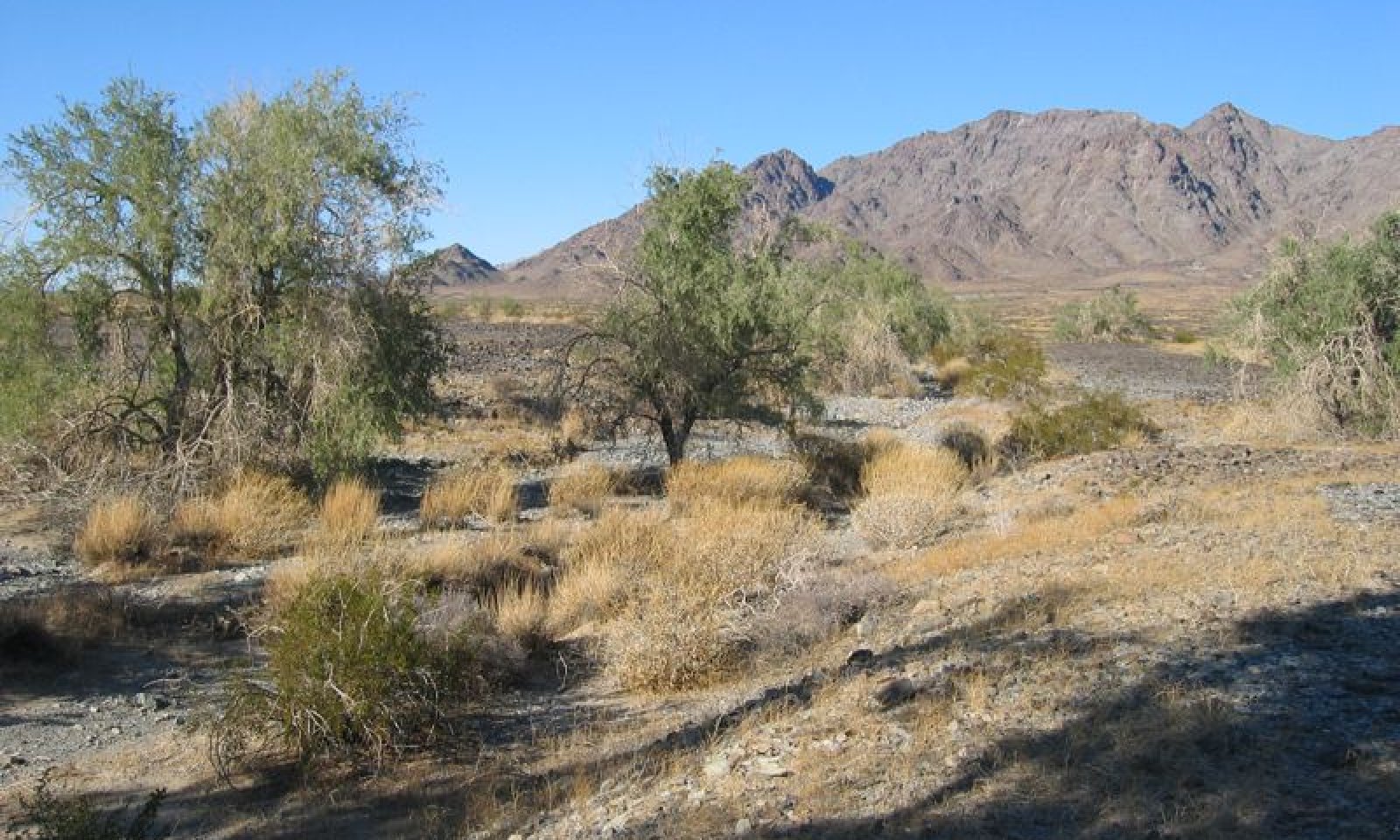
Frequently Flooded, Confined Ephemeral Stream
Scenario model
Current ecosystem state
Select a state
Management practices/drivers
Select a transition or restoration pathway
- Transition 2 More details
- Restoration pathway R3a More details
-
No transition or restoration pathway between the selected states has been described
Target ecosystem state
Select a state
Description
State 1 represents the historic-natural condition for this ecological site. It is similar to State 2, but has only native species. If we were to include dynamics for this state it would be the same as displayed in State 2. The presence of non-native species is minimal in State 2, and has not altered the hydrology or fire frequency.
State 2
Reference State



Description
This state represents the most common and most ecologically intact condition for this ecological site at the present time.
Submodel
Description
This state may occur if the drainage hydrology is altered or the surrounding desert pavement surface is disturbed. This state was not observed within the Joshua Tree National Park. More data is needed to describe this state and possible community phases.
Submodel
Mechanism
Triggers that can cause a transition to State 3 include surface flow alterations and disturbance of the adjacent desert pavement surface.
Mechanism
Restoration from State 3 back to State 2 would be an intensive task. Individual site assessments would be required to determine proper restoration methods. Some hydrological modifications are not feasible restored, such as ground water depletion. However, road diversions can be redesigned to allow proper stream alignment and flow. Since these channels are relatively confined and do not braid or migrate, proper locations for culverts or breaks are easier to identify. Seeds or plants of appropriate species may need to be reintroduced to the restored channels.
Model keys
Briefcase
Add ecological sites and Major Land Resource Areas to your briefcase by clicking on the briefcase (![]() ) icon wherever it occurs. Drag and drop items to reorder. Cookies are used to store briefcase items between browsing sessions. Because of this, the number of items that can be added to your briefcase is limited, and briefcase items added on one device and browser cannot be accessed from another device or browser. Users who do not wish to place cookies on their devices should not use the briefcase tool. Briefcase cookies serve no other purpose than described here and are deleted whenever browsing history is cleared.
) icon wherever it occurs. Drag and drop items to reorder. Cookies are used to store briefcase items between browsing sessions. Because of this, the number of items that can be added to your briefcase is limited, and briefcase items added on one device and browser cannot be accessed from another device or browser. Users who do not wish to place cookies on their devices should not use the briefcase tool. Briefcase cookies serve no other purpose than described here and are deleted whenever browsing history is cleared.
Ecological sites
Major Land Resource Areas
The Ecosystem Dynamics Interpretive Tool is an information system framework developed by the USDA-ARS Jornada Experimental Range, USDA Natural Resources Conservation Service, and New Mexico State University.
